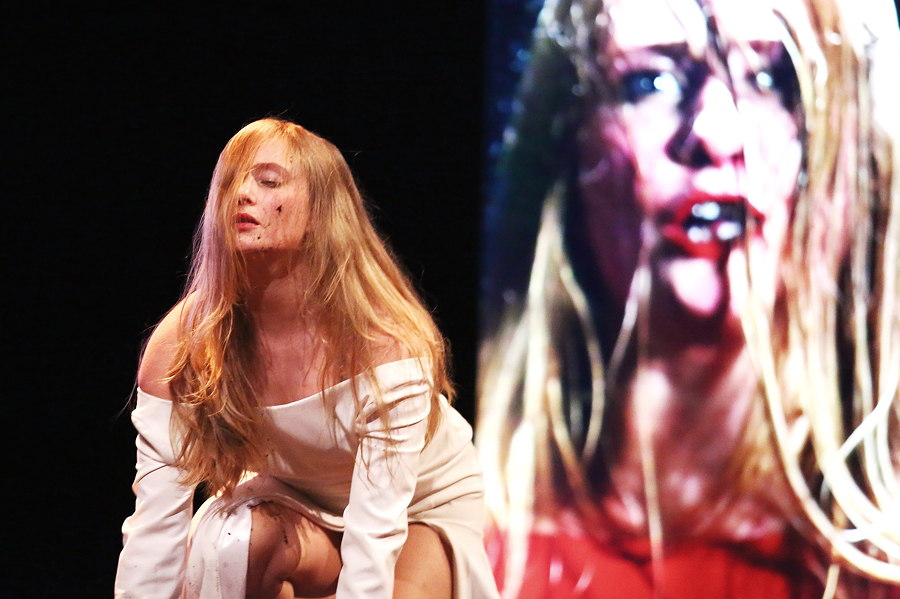Resurrexit Cassandra 16

Troubleyn/ Jan Fabre, Antwerpen, Belgium
Director: Jan Fabre
Performed in French with Hungarian and English subtitles
1 hours 20 minutes, without breaks.
The solo performance Resurrexit Cassandra revolves around the resurrection of a female redeemer, called Cassandra. A priestess, a shaman, a holy woman, an augur who sees the future. She could have saved the world so many times already. She could have protected the proud city of Troy from its slaughter, the oldest mythical city that perished in a sea of fire, to the screams and howls of the raped women and the men whose throats were slit. She had predicted her mother’s sad destiny, Odysseus’s long journey, the murder of Agamemnon, who had abducted her, as a slave and concubine, from Troy, her own death… Cassandra whispers, howls and shrieks, she repeats what she has known for so many years already, she tells us of the terrible things that she sees with her visionary eyes, but she is like a voice crying in the wilderness. Nobody listens to her, nobody believes her, she is regarded as the local madwoman, a hysterical halfwit, an ecstatic fool.
Actor
Stella Höttler
Author: Ruggero Cappuccio
Stage designer: Jan Fabre
Costume designer: Jan Fabre, Kasia Mielczarek
Choreographer: Jan Fabre
Dramaturge: Mark Geurden
Composer: Arthur Lavandier
Jan Fabre






















